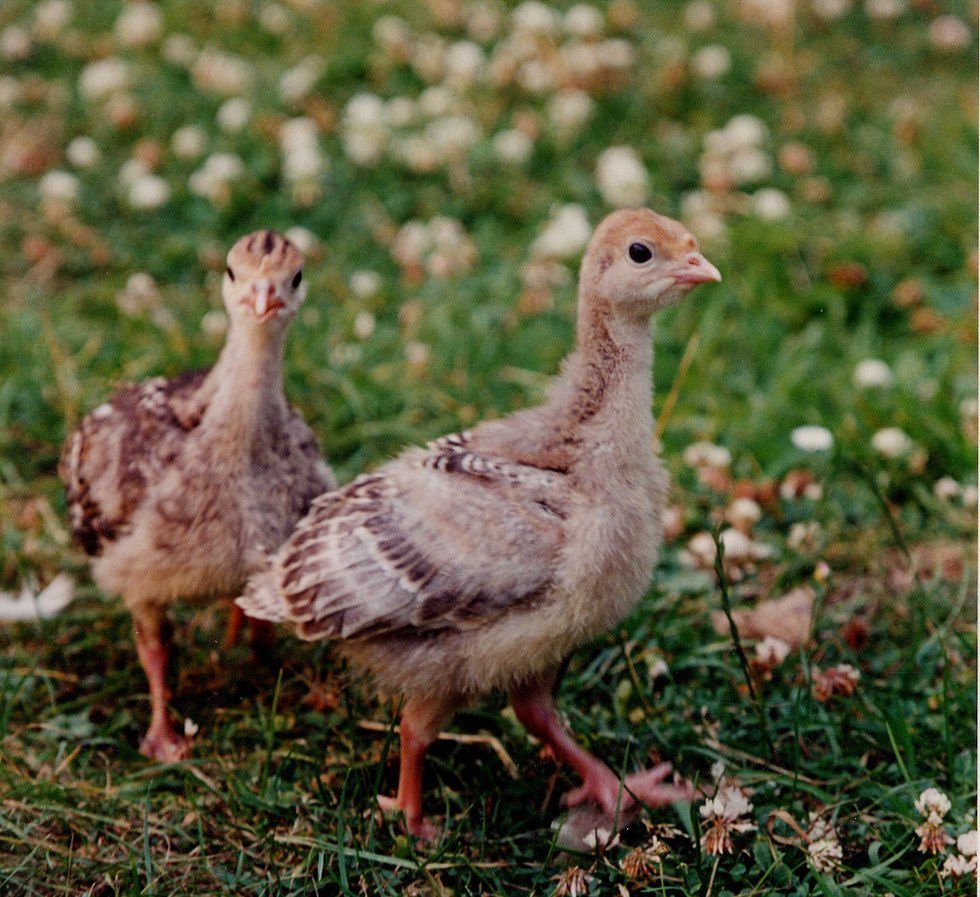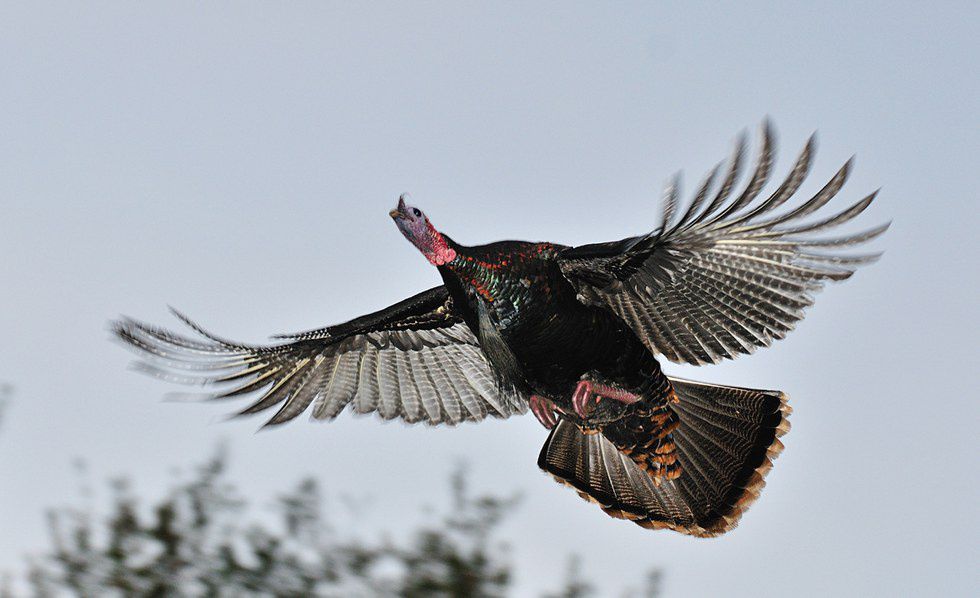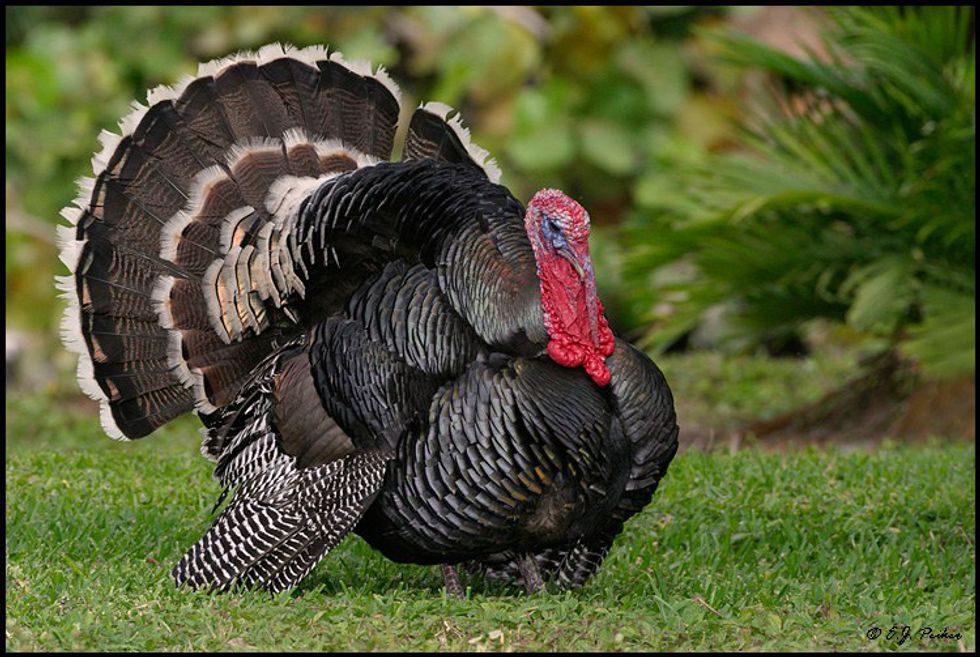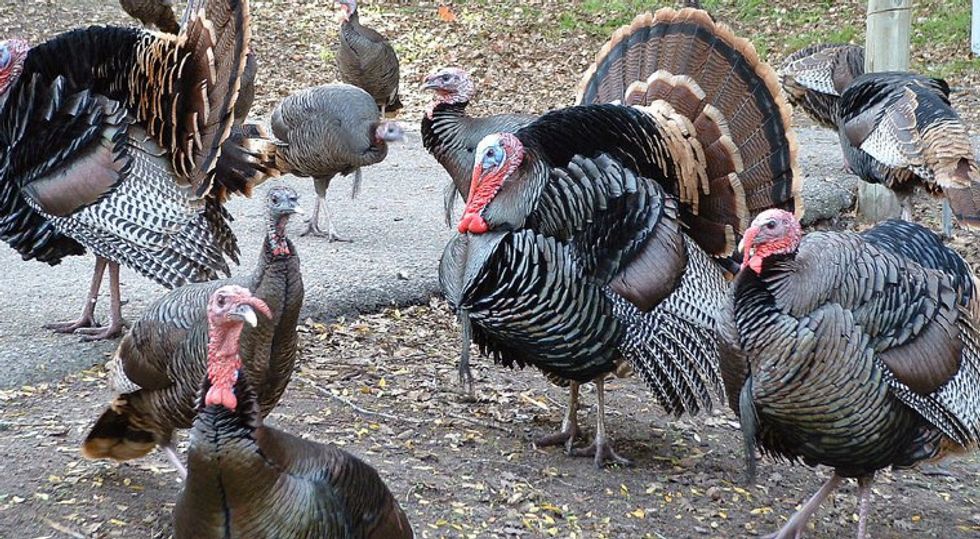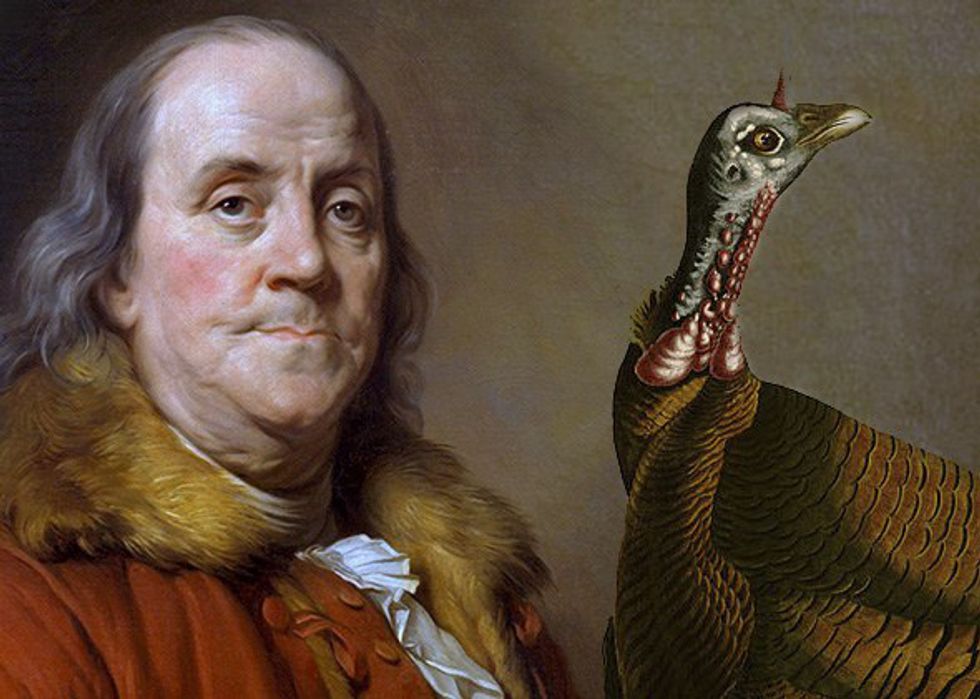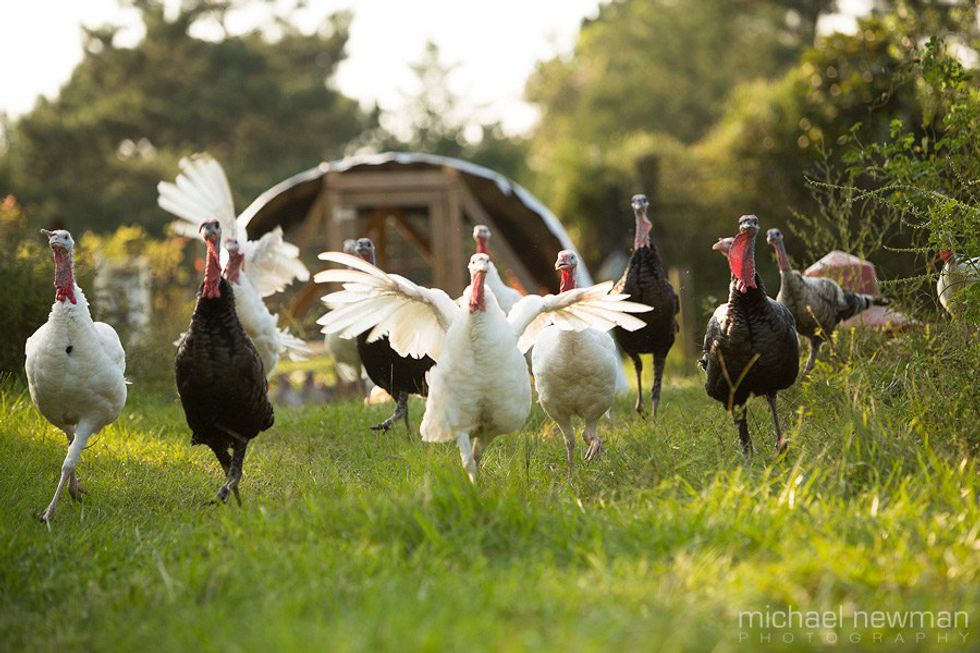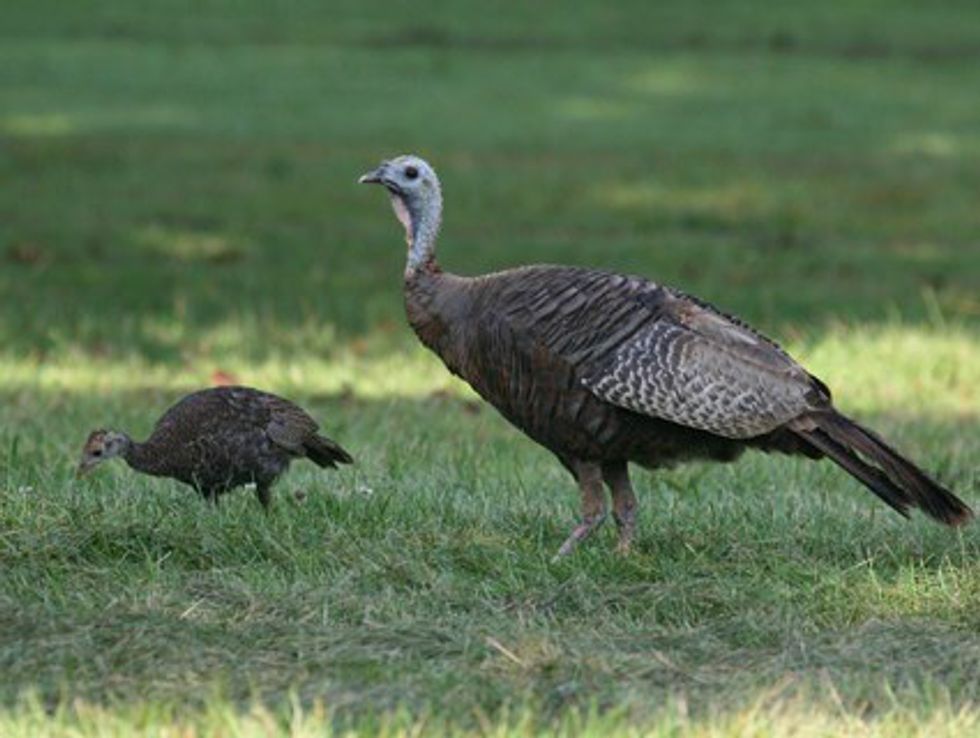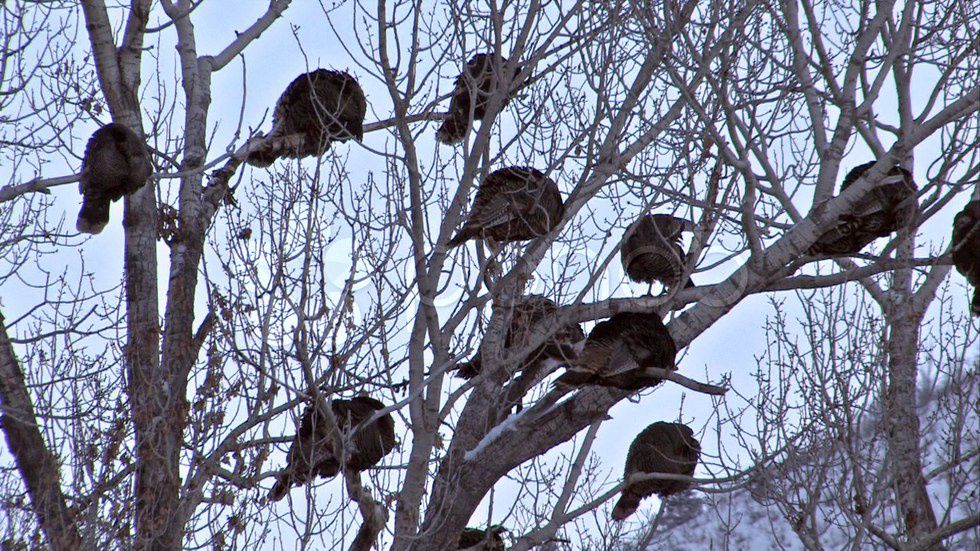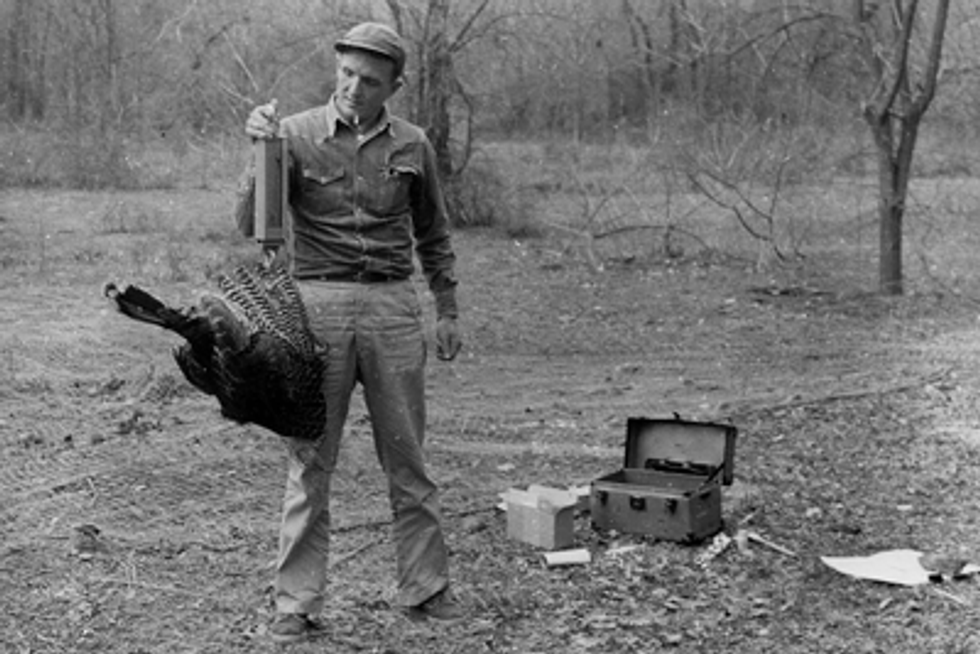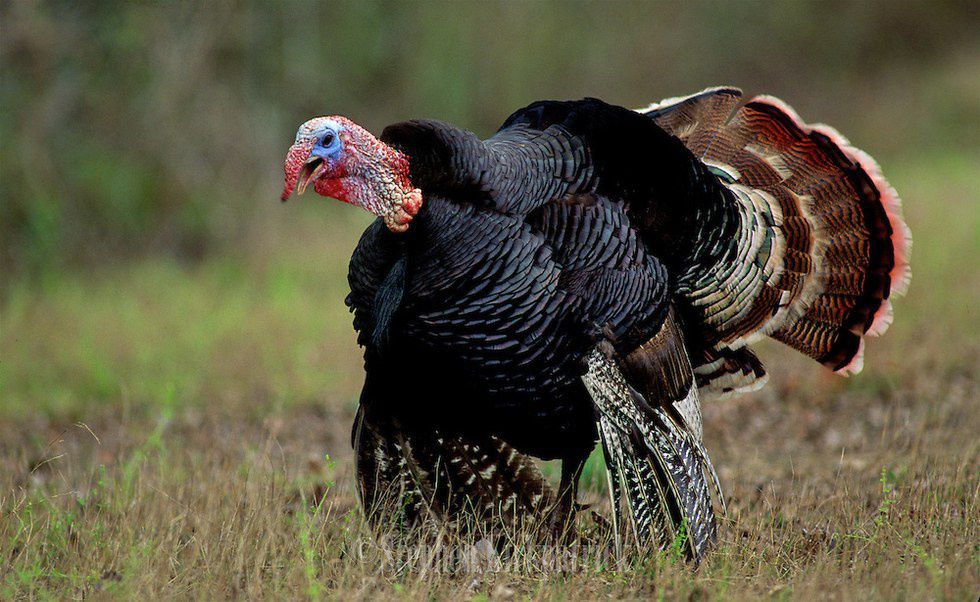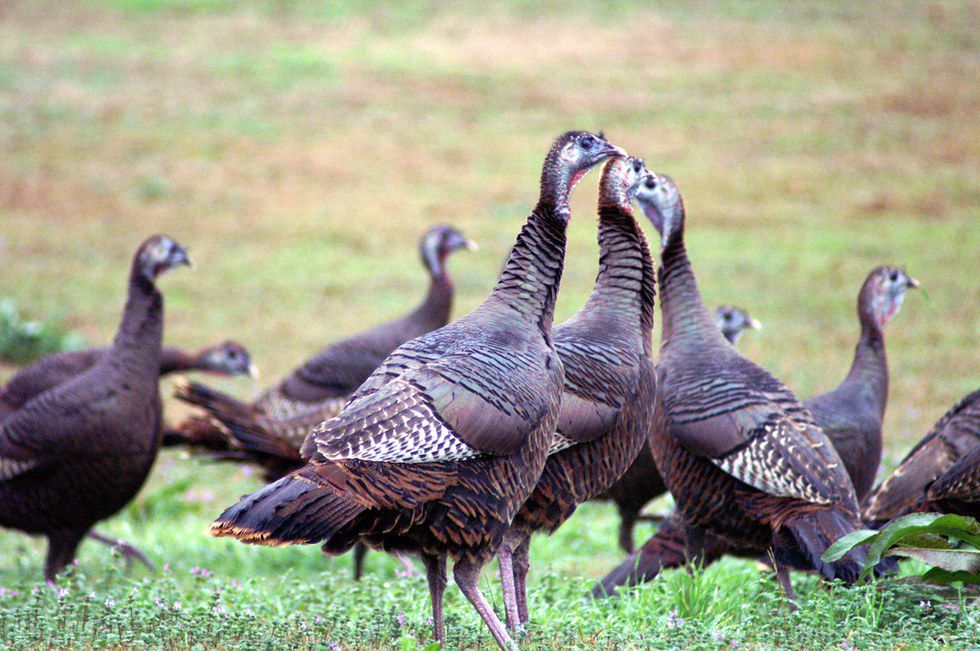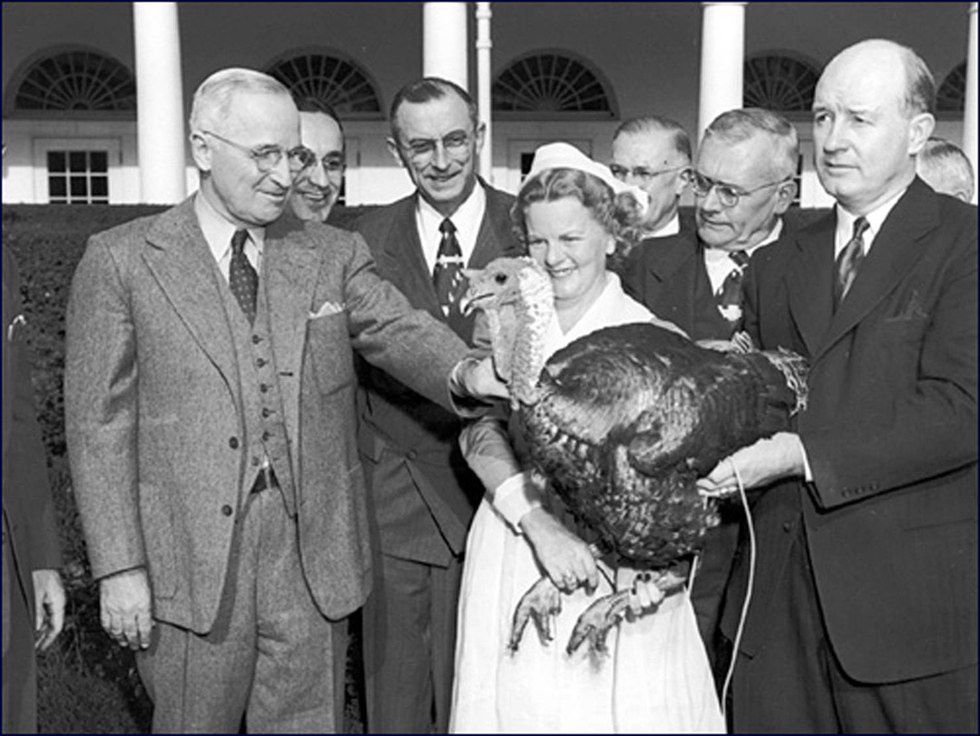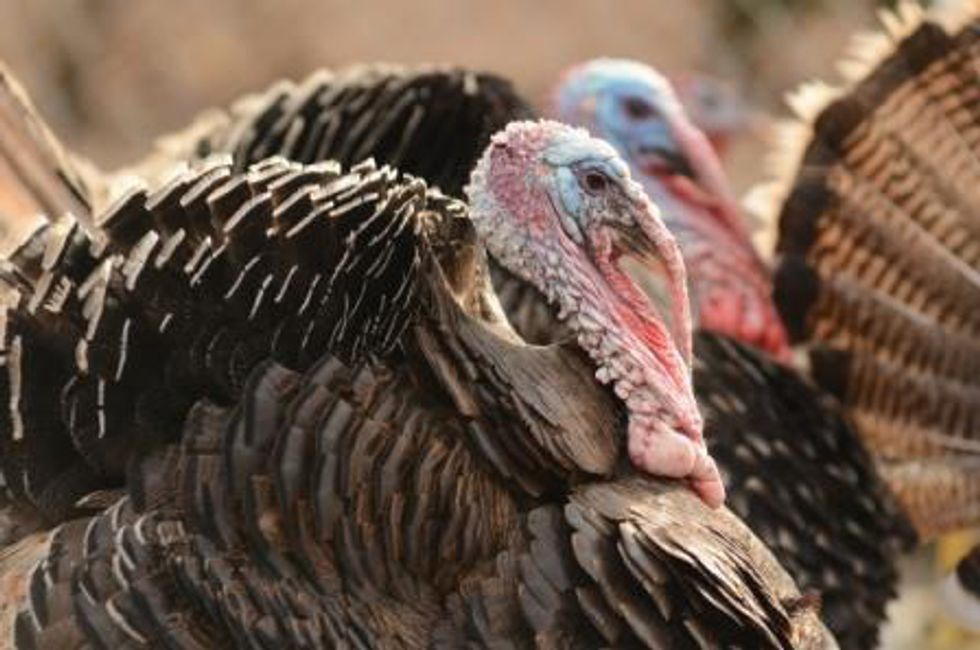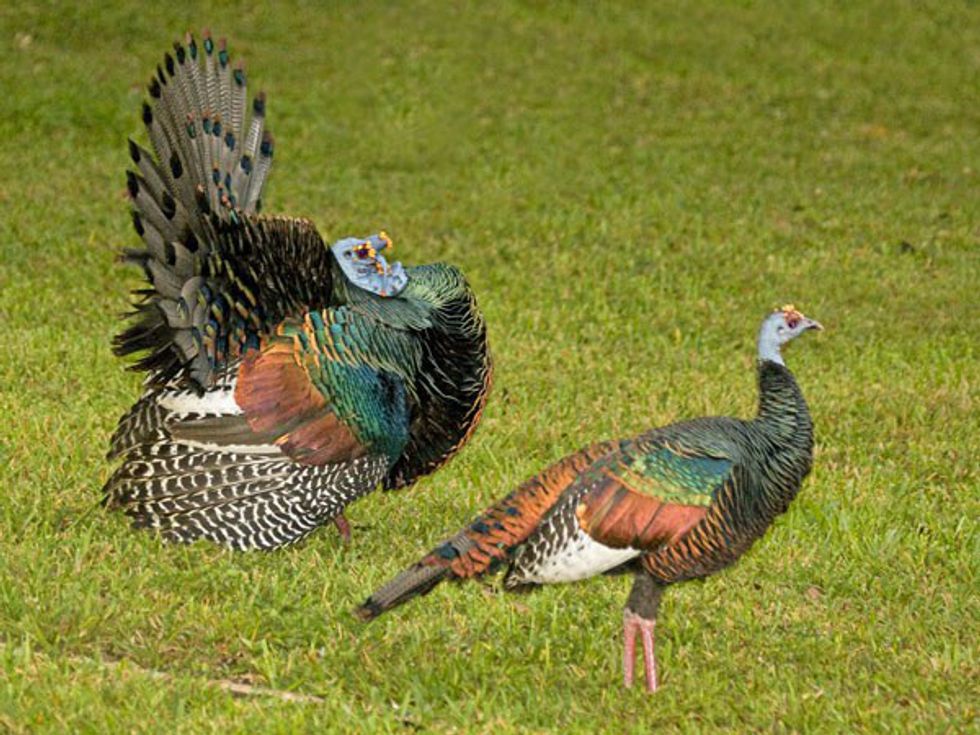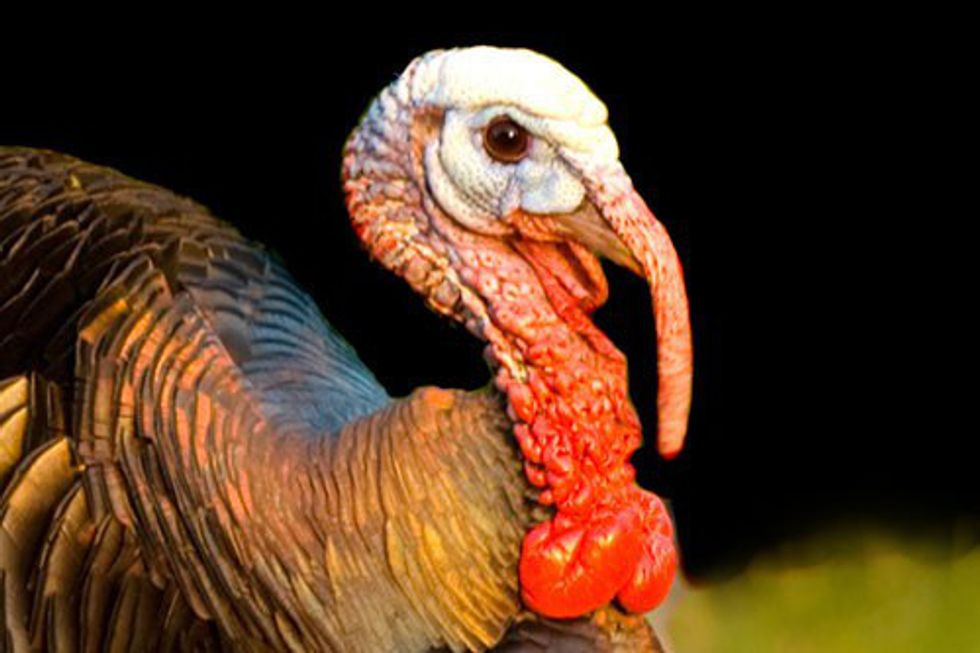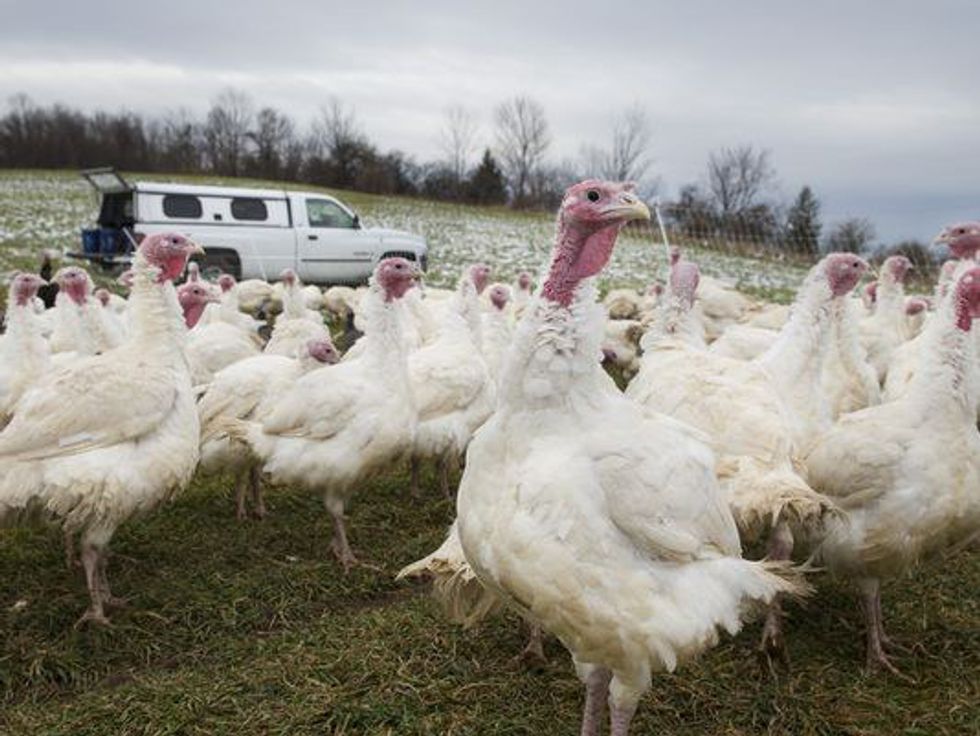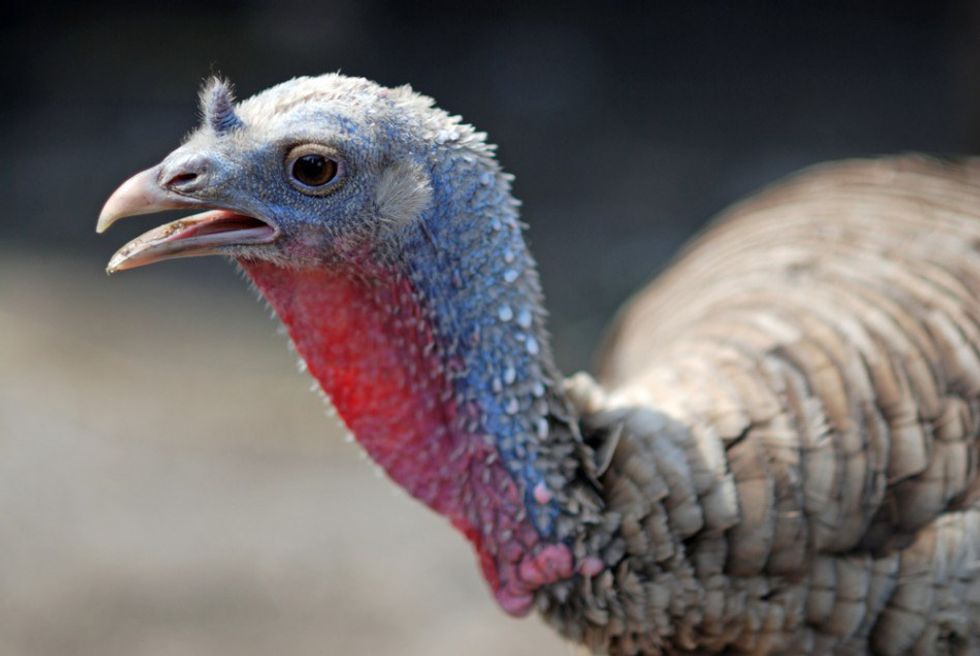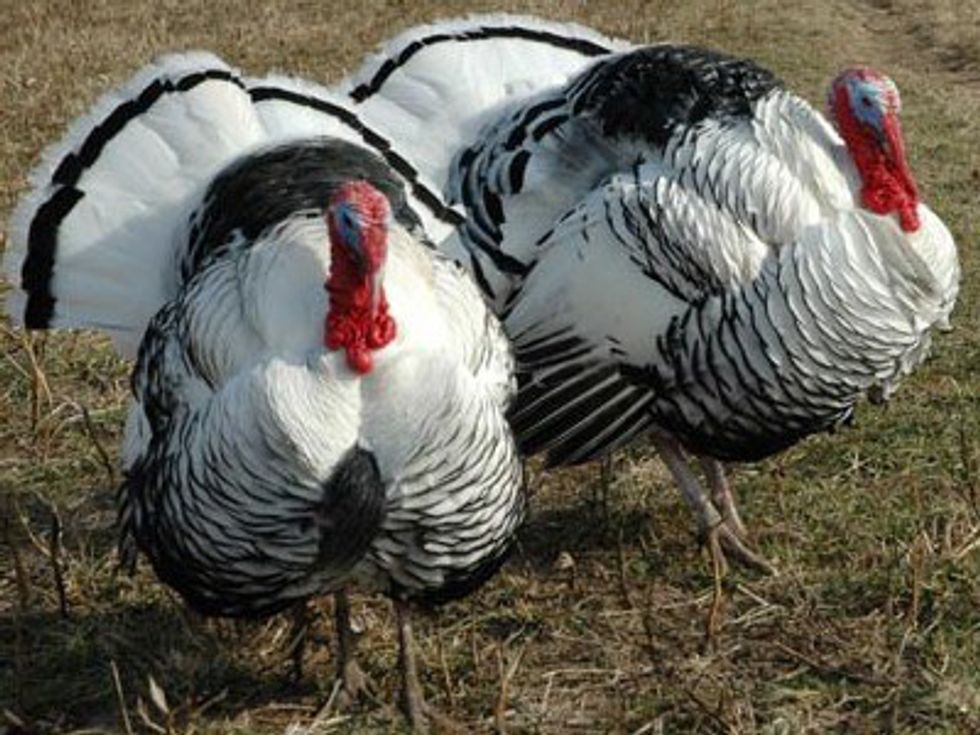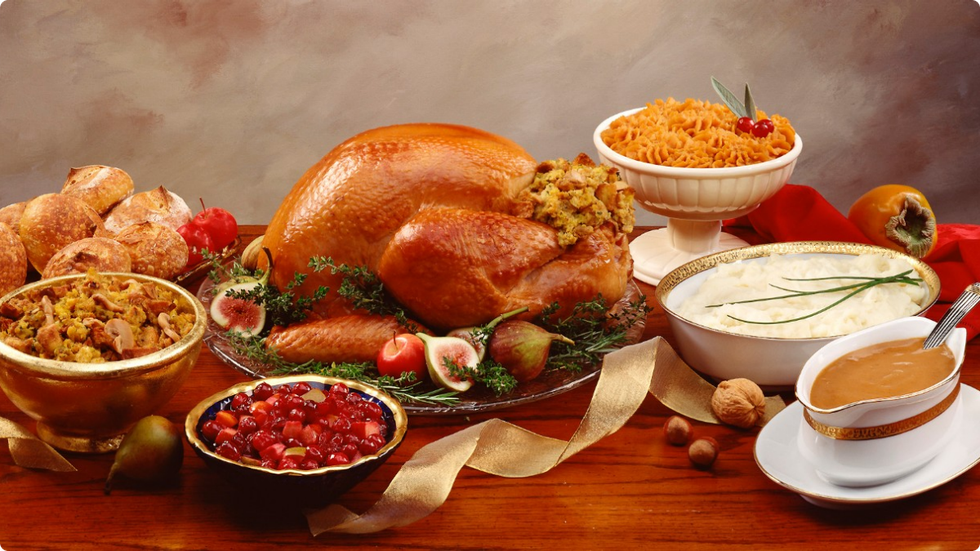Thanksgiving is this week, and as people get prepared to celebrate, let's take a chance to learn a little bit about the birds that make this day possible.
1.
Baby turkeys are called poults, and they stay with their mothers for the first year of their lives. The mother stays with them on the ground until they are strong enough to roost safely in trees.
2.
Wild turkeys can fly up to 55 mph, but only for a short amount of time.
3. 
Turkeys have 5,000 to 6,000 feathers on their body.
4. 
Turkeys are highly affectionate and form long lasting social bonds with each other, similar to dogs.
5. 
Benjamin Franklin was a fan of he wild turkey, saying that it is a “more respectable bird” than the bald eagle.
6. 
Turkeys can run up to 25 miles per hour.
7. 
Female turkeys do not gobble. Males use the gobble similarly to a Lion’s roar, as a way to attract their mates.
8. 
Due to the large number of natural predators, turkeys sleep in trees.
9. 
In the early 20th Century, wild turkeys were nearly extinct due to the removal of their woodland habitats and hunting. Wild turkey reintroduction programs eventually started up in the 1940s.
10.
A turkey’s gobble can be heard from over a mile away.
11.
A group of turkeys can be called a “crop,” “dole,” “gang,” “posse” and “raffle.”
12. 
The first presidential pardon ever given to a turkey was by President Harry Truman in 1947. The vice president also pardons a turkey.
13. 
The biggest turkey ever raised was 86 pounds, making it the size of a large dog.
14. 
Turkeys have excellent vision and can see movement from nearly 100 miles away.
15. 
16. 
They also have incredible hearing even though they do not have external ear structures. There are small holes behind their eyes that serve as ears and they can pick up sounds from as far as a mile away.
17. 
The turkey we eat on Thanksgiving are domesticated turkeys, which are often raised on farms. Minnesota, North Carolina, Arkansas, Missouri, Virginia, Indiana, California, South Carolina, Pennsylvania and Ohio are the largest producers of turkeys in the United States.
18. 
The colors of a turkey’s head and neck change color depending on its mood.
19.
Due to their larger size, domesticated turkeys cannot fly.
20.
According to the National Turkey Federation, 95 percent of Americans eat turkey during Thanksgiving and 45 million turkeys are eaten each Thanksgiving.




